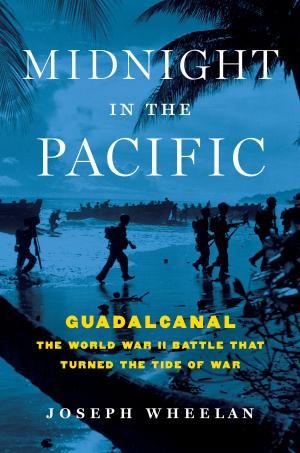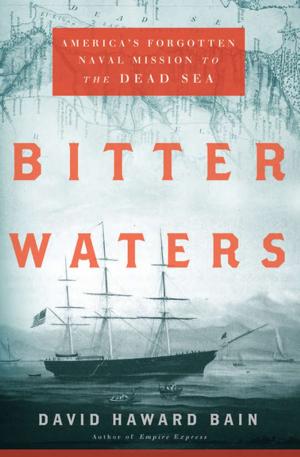Manasses (Bull Run) National Battlefield Park-Virginia (Illustrations)
National Park Service Historical Handbook No.15
Nonfiction, History, Americas, South America, United States, State & Local, Military| Author: | Francis F. Wilshin | ISBN: | 1230000280409 |
| Publisher: | NATIONAL PARK | Publication: | November 16, 2014 |
| Imprint: | Language: | English |
| Author: | Francis F. Wilshin |
| ISBN: | 1230000280409 |
| Publisher: | NATIONAL PARK |
| Publication: | November 16, 2014 |
| Imprint: | |
| Language: | English |
Example in this ebook
The First Days of the War
The flash and the dull roar of a 10-inch mortar, April 12, 1861, announced to a startled countryside the firing of the opening gun of the Civil War. Two days later Fort Sumter surrendered. The reverberations of this shot were to shake the very foundations of the Nation. Gone was the period of apathy and indecision. Events now moved with lightning-like rapidity.
On April 15, Lincoln issued his call for 75,000 volunteers, and soon troops were pouring into Washington. On May 23, Virginia voted to ratify the Ordinance of Secession, and the next day columns of Federal troops crossed the Potomac and seized Alexandria and Arlington Heights. Eight days later Richmond became the capital of the Confederacy and the chief objective of the Federal armies in the East. Stretching from the Ohio to Chesapeake Bay, Virginia constituted the wealthiest and most populous state of the Confederacy. Here were to be found rich natural resources and a heavy network of railroads and highways for military transport. These military advantages, however, were somewhat offset by the deep waters which flanked much of the state, increasing its vulnerability to Federal attack.
Straight across the path of one of the main high roads to Richmond from the north lay Manassas, a small railroad settlement, only a few miles east of the Bull Run Mountains. Here the Orange and Alexandria Railroad formed a junction with the Manassas Gap line which extended westward through the Blue Ridge to Strasburg, near Winchester. By seizure of this significant junction, located approximately 25 miles southwest of Washington, the Federal army could follow the Orange and Alexandria southwest to Gordonsville and thence proceed by the Virginia Central eastward to Richmond. This, with good supporting highways, would assure an overland approach that would avoid many of the natural barriers found in the shortest route by Aquia Creek and Fredericksburg.
The significance of Manassas was likewise apparent to the Confederates. As early as May 6, Col. St. George Cocke, commanding the Potomac Department, had received a dispatch from Gen. Robert E. Lee: “You are desired to post at Manassas Gap Junction a force sufficient to defend that point against an attack likely to be made against it by troops from Washington.”
The first troops to arrive were two raw, undrilled, and ununiformed Irish regiments from Alexandria, armed with altered muskets. By May 14, Cocke was able to write Lee that he had succeeded in assembling a force of 918 men at Manassas. That he had a clear grasp of the military significance of the area is seen in his dispatch to Lee the next day: “It is obvious, sir, with a strong corps d’armee at Manassas, and at least a division at Winchester, these two bodies being connected by a continuous railway through Manassas Gap, there should be kept at all times upon that road ample means of transportation. These two columns—one at Manassas and one at Winchester—could readily co-operate and concentrate upon the one point or the other.” Here then was a significant germ of Confederate strategy.
As a phase of this strategy, Brig. Gen. Joseph E. Johnston had been sent to take command of the Confederate force of about 12,000 men stationed in the northern end of the Shenandoah Valley at Harper’s Ferry. Here was the gateway to the North through the Cumberland Valley of Maryland and here passed the great Baltimore and Ohio Railroad which connected Washington with the West. But Maj. Gen. Winfield Scott, then in command of the Army of the United States, had dispatched Maj. Gen. Robert Patterson with a force of about 18,000 men to seize this strategic position and to prevent, at all odds, the junction of Johnston’s forces with the Confederate army at Manassas.
To be continue in this ebook...............................................................................................................
Example in this ebook
The First Days of the War
The flash and the dull roar of a 10-inch mortar, April 12, 1861, announced to a startled countryside the firing of the opening gun of the Civil War. Two days later Fort Sumter surrendered. The reverberations of this shot were to shake the very foundations of the Nation. Gone was the period of apathy and indecision. Events now moved with lightning-like rapidity.
On April 15, Lincoln issued his call for 75,000 volunteers, and soon troops were pouring into Washington. On May 23, Virginia voted to ratify the Ordinance of Secession, and the next day columns of Federal troops crossed the Potomac and seized Alexandria and Arlington Heights. Eight days later Richmond became the capital of the Confederacy and the chief objective of the Federal armies in the East. Stretching from the Ohio to Chesapeake Bay, Virginia constituted the wealthiest and most populous state of the Confederacy. Here were to be found rich natural resources and a heavy network of railroads and highways for military transport. These military advantages, however, were somewhat offset by the deep waters which flanked much of the state, increasing its vulnerability to Federal attack.
Straight across the path of one of the main high roads to Richmond from the north lay Manassas, a small railroad settlement, only a few miles east of the Bull Run Mountains. Here the Orange and Alexandria Railroad formed a junction with the Manassas Gap line which extended westward through the Blue Ridge to Strasburg, near Winchester. By seizure of this significant junction, located approximately 25 miles southwest of Washington, the Federal army could follow the Orange and Alexandria southwest to Gordonsville and thence proceed by the Virginia Central eastward to Richmond. This, with good supporting highways, would assure an overland approach that would avoid many of the natural barriers found in the shortest route by Aquia Creek and Fredericksburg.
The significance of Manassas was likewise apparent to the Confederates. As early as May 6, Col. St. George Cocke, commanding the Potomac Department, had received a dispatch from Gen. Robert E. Lee: “You are desired to post at Manassas Gap Junction a force sufficient to defend that point against an attack likely to be made against it by troops from Washington.”
The first troops to arrive were two raw, undrilled, and ununiformed Irish regiments from Alexandria, armed with altered muskets. By May 14, Cocke was able to write Lee that he had succeeded in assembling a force of 918 men at Manassas. That he had a clear grasp of the military significance of the area is seen in his dispatch to Lee the next day: “It is obvious, sir, with a strong corps d’armee at Manassas, and at least a division at Winchester, these two bodies being connected by a continuous railway through Manassas Gap, there should be kept at all times upon that road ample means of transportation. These two columns—one at Manassas and one at Winchester—could readily co-operate and concentrate upon the one point or the other.” Here then was a significant germ of Confederate strategy.
As a phase of this strategy, Brig. Gen. Joseph E. Johnston had been sent to take command of the Confederate force of about 12,000 men stationed in the northern end of the Shenandoah Valley at Harper’s Ferry. Here was the gateway to the North through the Cumberland Valley of Maryland and here passed the great Baltimore and Ohio Railroad which connected Washington with the West. But Maj. Gen. Winfield Scott, then in command of the Army of the United States, had dispatched Maj. Gen. Robert Patterson with a force of about 18,000 men to seize this strategic position and to prevent, at all odds, the junction of Johnston’s forces with the Confederate army at Manassas.
To be continue in this ebook...............................................................................................................

![Cover of the book My Experiences In The World War – Vol. I [Illustrated Edition] by Francis F. Wilshin](https://www.kuoky.com/images/2014/june/300x300/9781782891277-RM7d_300x.jpg)













